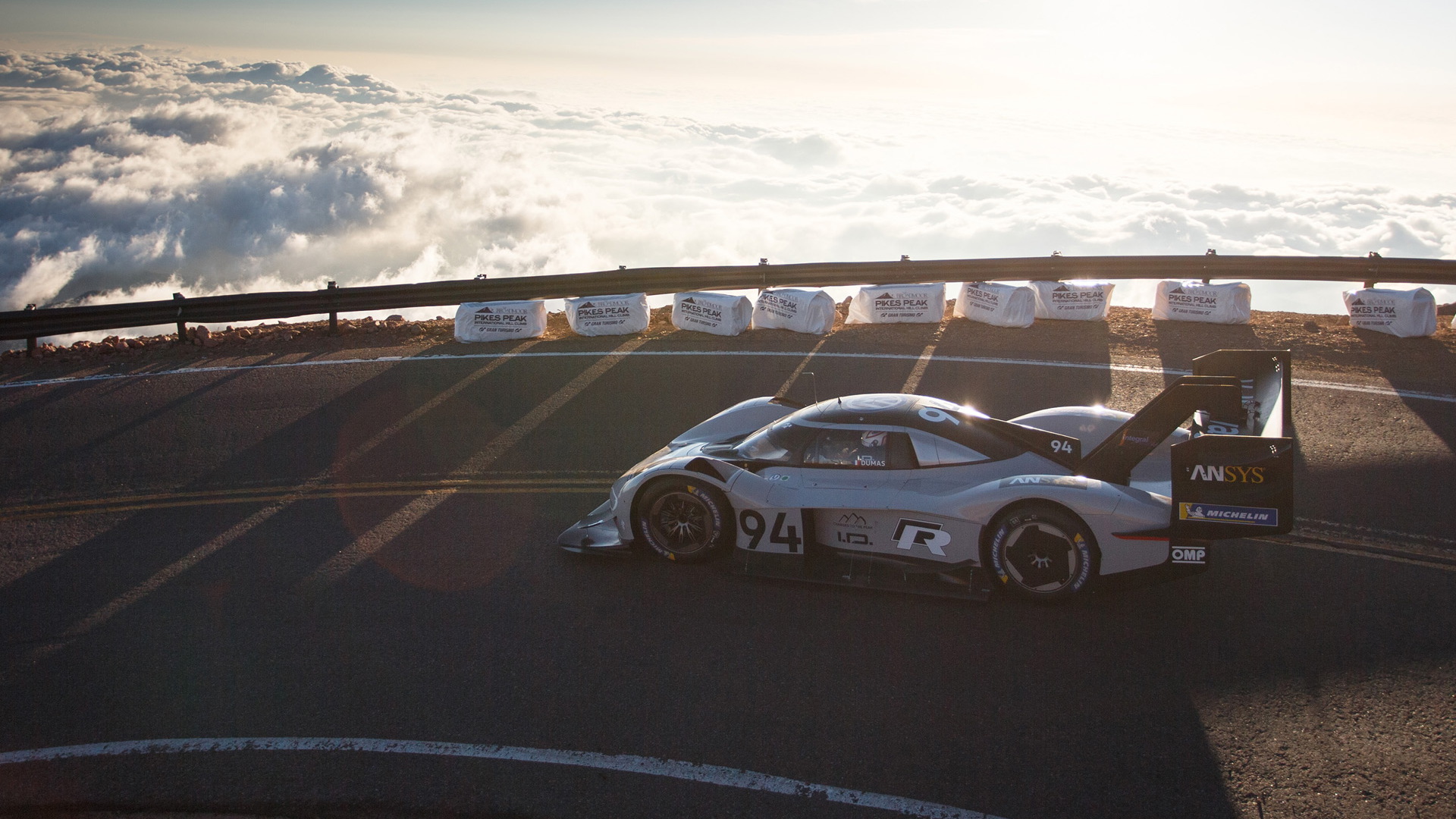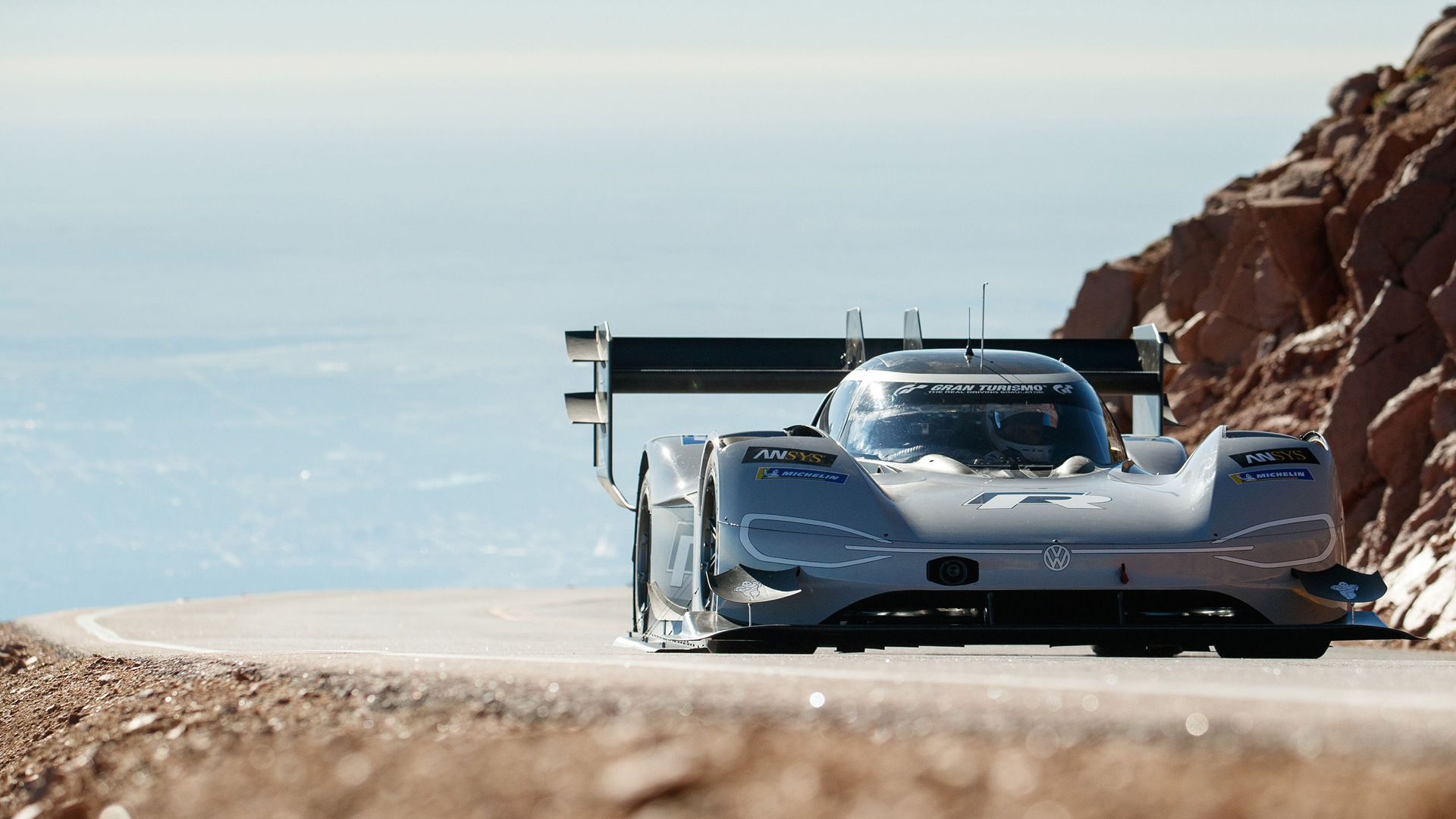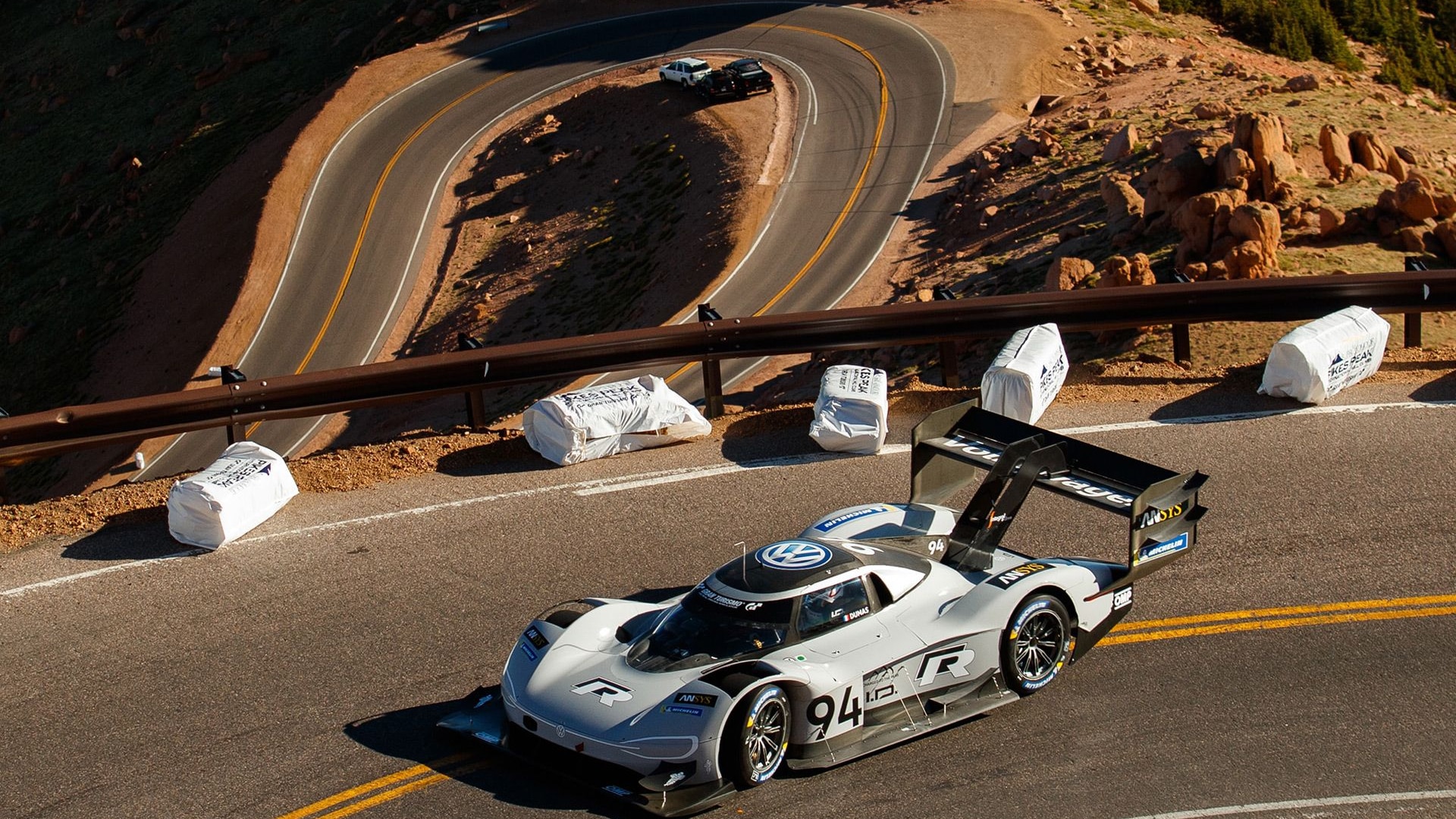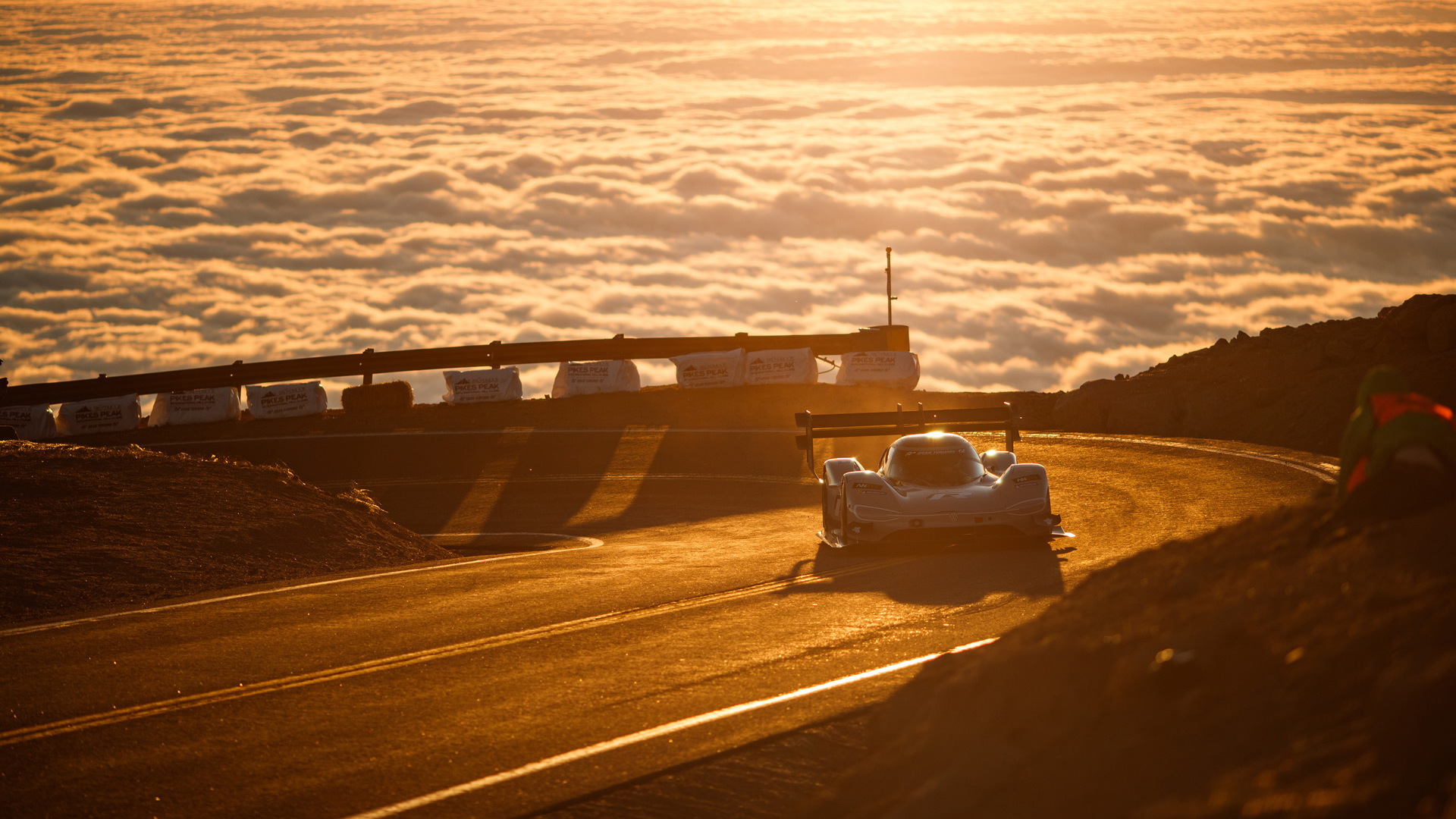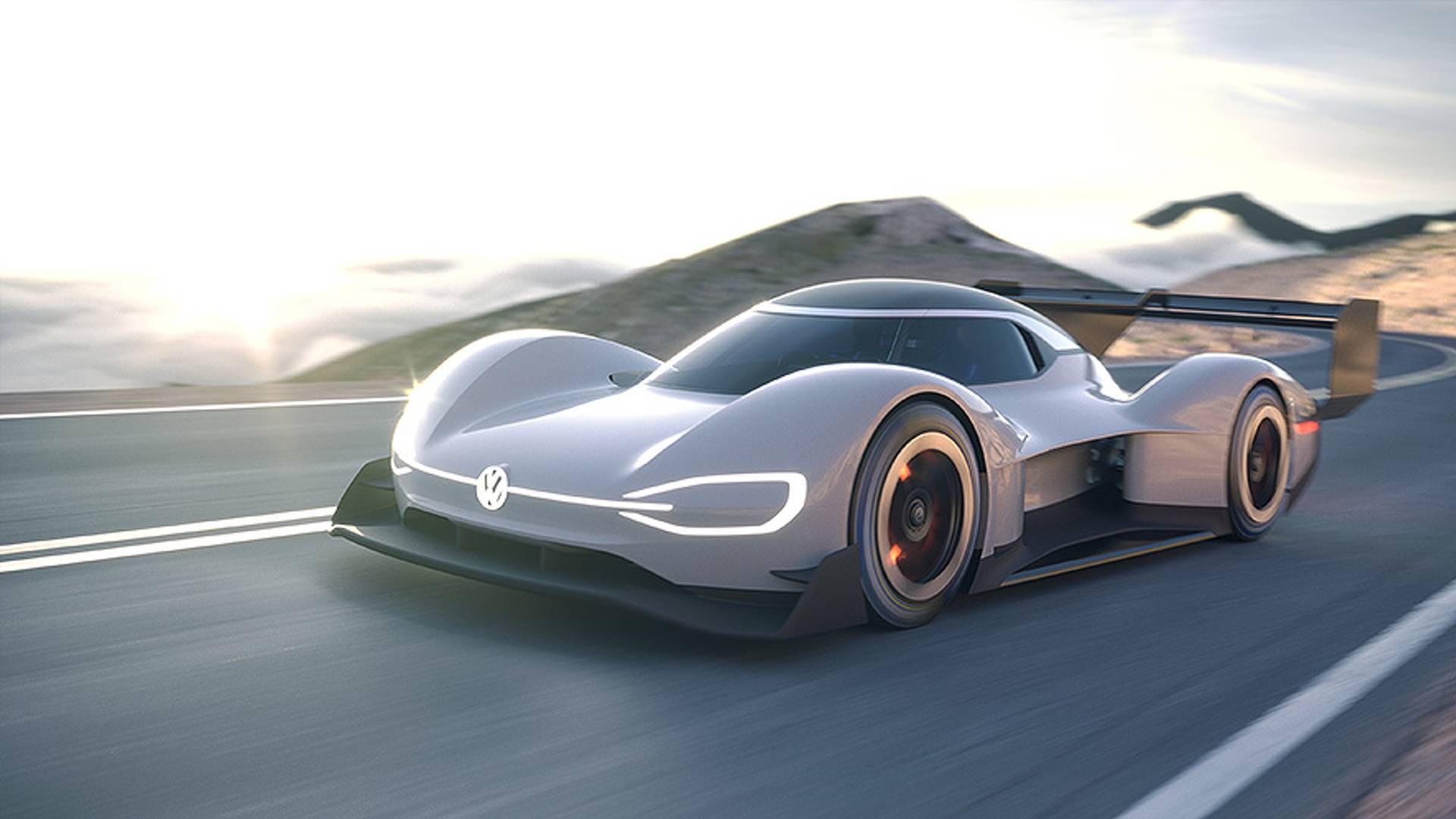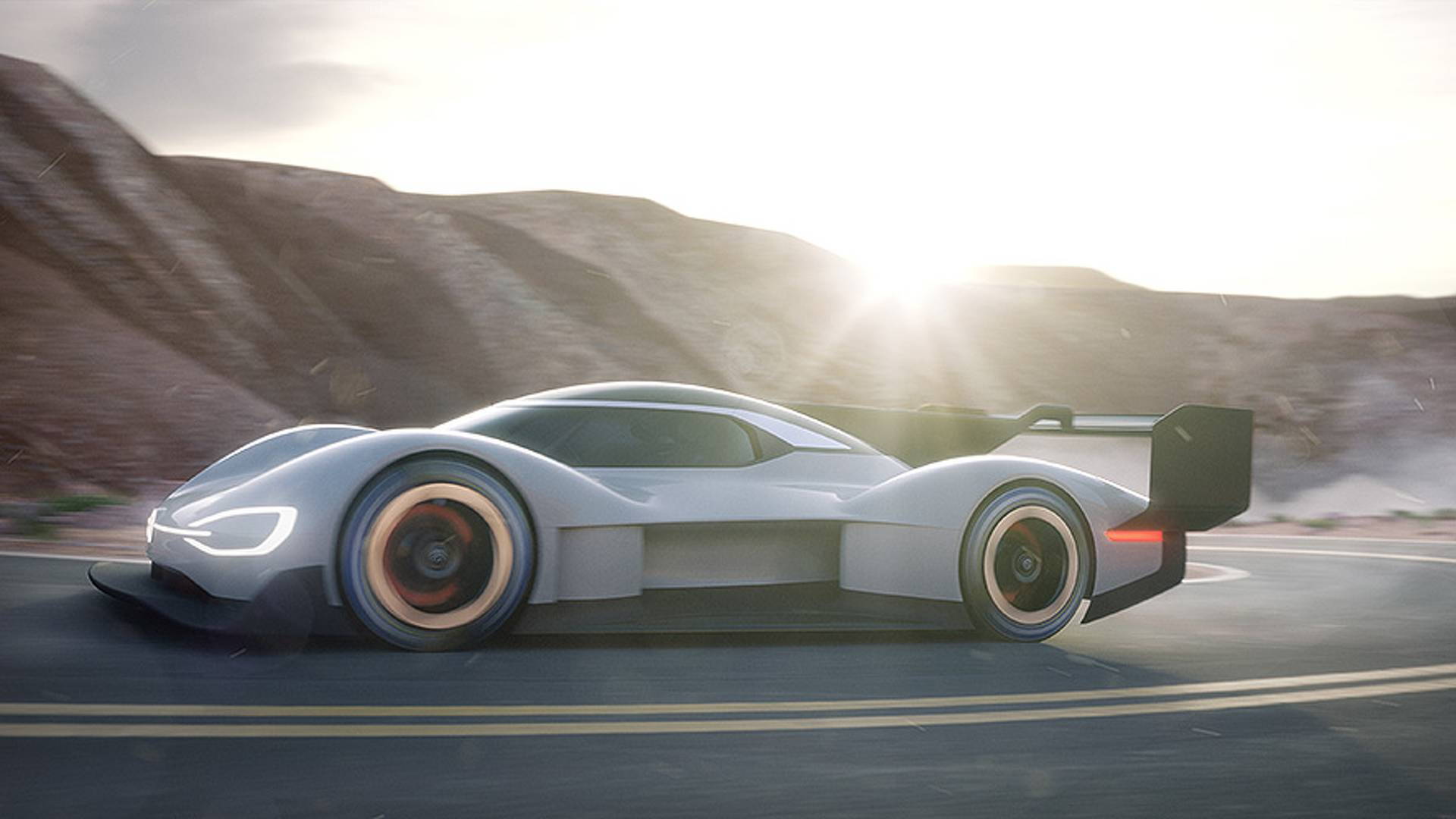For want of a $12.24 ball joint in 1987, Volkswagen might not be here. That year, the twin-engine, 652-horsepower Golf driven by Jochi Kleint broke a front ball joint a mere three turns from the finish line, therein sowing the seed of revenge. So, if not for that bit of bad luck, VW might not have shattered both the electric car record of 8:57.118 and the overall record of 8:13.878 at the 2018 Pikes Peak International Hill Climb with a blistering 7:57.158 set by the ID R electric racer.
Electric propulsion and the prototype format provide the best possible form factor for the job for a variety of reasons. For starters, the unlimited class allows technical freedom, and it is rumored that the ID R cost $17 million. Secondly, VW chose the electric option fundamentally because electric motors are immune to a combustion engine's output drop in thin air at altitude.
An internal combustion engine burns a mixture of fuel and air. As air density decreases, so does internal combustion power. Given that the race starts at 9,390 feet of elevation and finishes at 14,110 feet—a density loss of about 40 percent—the perennial piston-engine problem is no problem for an electric car, though high temperatures can effect battery power.

Volkswagen ID R Pikes Peak racer, Jim Resnick photo
However, the business reason for fielding an electric race car is a small matter of the VW Group pouring $84 billion of its R&D budget by 2022 (according to Reuters) into electric propulsion for production cars. Indeed, VW's ID line of pure electric production cars are confirmed to starting launching from 2020, so the first act of VW's electric play becomes the ID R.
The ID R looks for all the world like a Le Mans prototype with an overgrown wing at the back. It's also nearly 18 inches wider and 21.7 inches longer than an LMP1 race car, making lots of downforce the critical factor.
"For an engineer," said Willy Rampf, technical advisor to VW, "this is something of a paradise because the rules at Pikes Peak in this class are very open. This is the highest downforce car I've ever worked on even compared to my days in Formula 1, but our peak road speed is about 220 kph (about 137 mph), so it's quite shy of what an F1 car would reach. Despite that, this car generates enough downforce at this track's top speed to overcome its weight and drive inverted, or on the ceiling."
At the core of it all, the two-segment, 3,500-cell, variable-voltage battery of the ID R uses a VW-designed, rapid-recharging system fueled by glycerin, which is a byproduct of biodiesel. It charges rapidly so, in the case of a red flag or an interrupted racing session, the car can fully recharge in 20 minutes or less. It’s a 90-kilowatt system, which is rapid enough to charge the ID R’s two power-focused battery packs in the allotted time, but not so rapid as to overheat the batteries. A Tesla Supercharger, for instance, can charge at up to 120 kw.
VW developed the components to charge its specialized car in the allotted time, though there will not likely be any possible technology transfer of that rapid power delivery to future production cars; this application is far too specialized.
In addition, because air temperature in the paddock can range from near freezing to 80 degrees F, air exchangers hooked to industrial-sized tubes can generate either cool or hot air to aim at the ID R's vital organs to keep the temperature within the ideal operating range.
Most existing electric car batteries provide high energy density for longer-range driving; the ID R must, however, deliver high power density for total power delivery in short duration.

2018 Volkswagen ID R Pikes Peak race car
The two-segment battery powers two motors totaling 680 horsepower and 479 pound-feet of torque, though to see it launch from a dead rest is to see an aircraft carrier's catapult launch a fighter jet into flight. The ID R just picks itself up and rushes ahead with freakish speed. You know it's an occasion when 60 or so experienced racing veterans at the starting line are simply left breathless.
"We had 20-30 people working on this project," said Francois-Xavier Demaison, technical director of VW Motorsport. "This being an unlimited class, our most critical thing is weight, and we had a target of under 1,100 kg (2,426 pounds)."
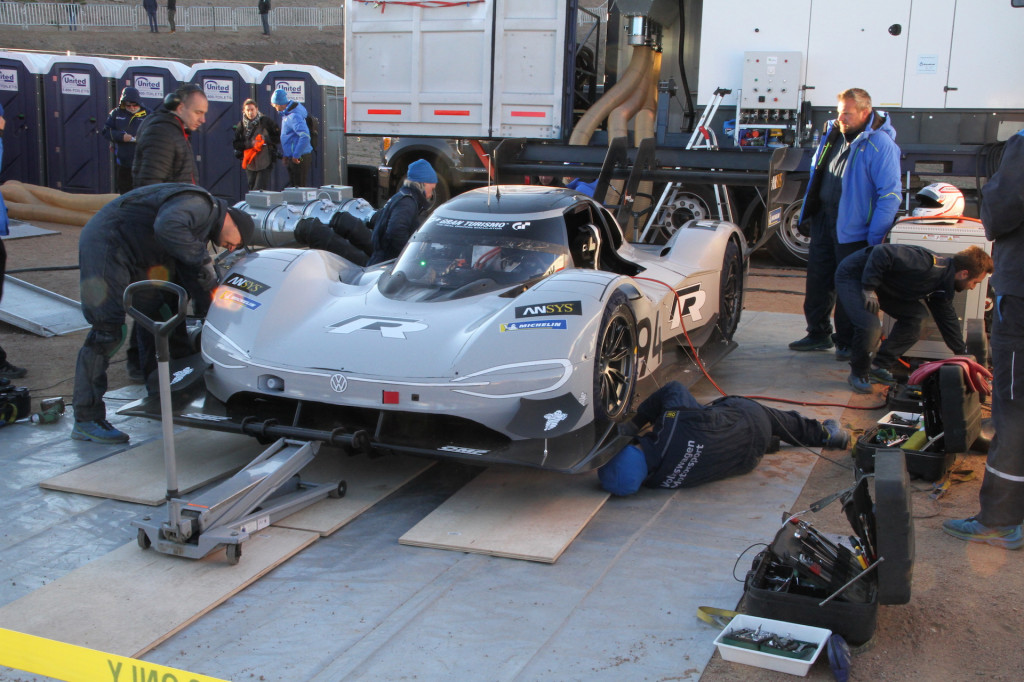
Volkswagen ID R Pikes Peak racer, Jim Resnick photo
Active torque distribution at all four wheels surely helped Pikes Peak veteran and Le Mans winner Romain Dumas, as did a variety of driver aids including anti-lock braking, traction control, balance control and torque vectoring. Despite this, he certainly had his hands full steering, braking and judiciously using the electric throttle. Dumas had to make no adjustments to controls while driving.
"This is the hardest race," Dumas told Motor Authority prior to his record-setting run. "Harder than Le Mans, really, because you just cannot recover from any mistake. You have to be perfect and as close to the limit as possible for the whole run."
The electric motor driving the rear wheels is a development of what will be the next-generation Formula E unit. We asked the engineers why they opted for two motors rather than perhaps four in-wheel motors. The official answer is a concern over weight, but we suspect in this accelerated development period (nine months, after all), there simply wasn't time to integrate in-wheel motors.
"We also needed to train the mechanics to be very careful when working on the car," noted Rampf. "Getting shocked by this car when working on it would not end well."
That is unlike VW's weekend, which ended in victory, and by an enormous margin.
